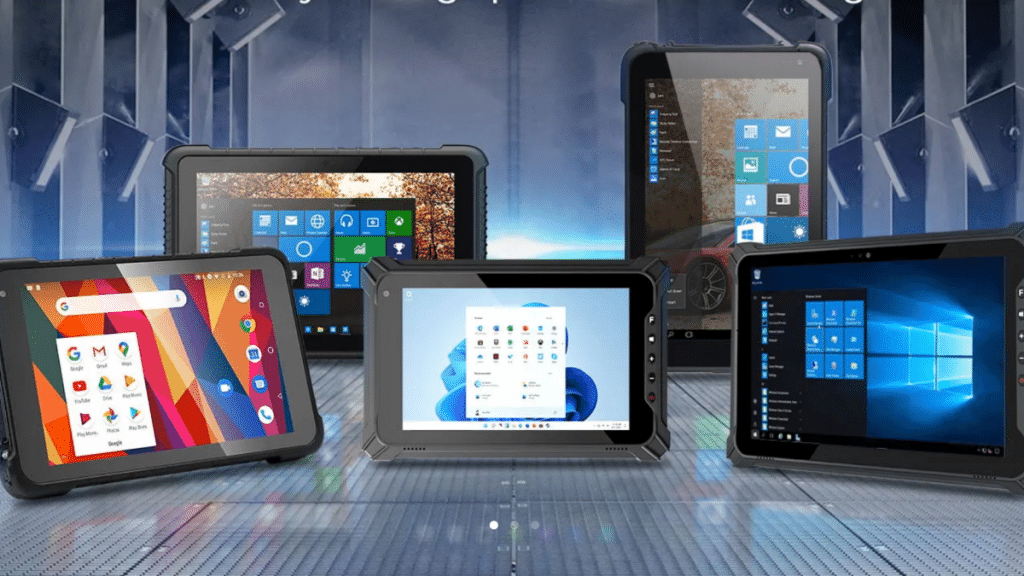In the digital era, tablets have become ubiquitous tools for personal and professional use. Their portability, functionality, and range of applications have made them popular across various sectors. However, not all tablets are created equal. The main distinction lies between rugged tablets, designed for durability and reliability in harsh conditions, and regular tablets, intended for general use. Understanding these differences is crucial for businesses and individuals who rely on these devices for critical operations and everyday tasks alike.
As technology continues to evolve, the distinction between rugged and regular tablets becomes increasingly significant. This article delves into the essential differences between these two types of devices, focusing on design, durability, performance, and use case scenarios. By examining these aspects, we aim to provide a comprehensive overview of why choosing the right type of tablet is vital for meeting specific needs and environments.
Design and Build Quality
Regular Tablets
Aesthetics and Form Factor: Regular tablets prioritize a sleek and lightweight design, emphasizing aesthetics and ease of use in everyday settings.
Materials: Often made with plastic or light metal frames and standard glass screens, these tablets are built for light handling and are not intended for extreme conditions.
Rugged Tablets
Durability First Design: Rugged tablets feature a design that prioritizes durability. They come with reinforced frames, and rubberized edges, and are built to withstand drops, vibrations, and pressure.
Materials and Construction: Utilizing high-grade materials such as magnesium alloy for the chassis and Gorilla Glass for the screen, rugged tablets are engineered to endure harsh environments.
Durability and Environmental Resistance
Regular Tablets
Environmental Sensitivity: Regular tablets can be vulnerable to dust, water, and temperature extremes. Their operation and longevity can be severely impacted by such conditions.
Handling Care: These devices typically require additional protective cases to prevent damage from drops or impacts, which can be cumbersome and only partially effective.
Rugged Tablets
IP Rating and MIL-STD Certification: Rugged tablets are often certified with IP ratings for dust and water resistance (e.g., IP65 or IP68) and comply with military standards (e.g., MIL-STD-810G) for durability.
Extreme Condition Performance: Designed to operate in extreme temperatures, high humidity, and other challenging environmental conditions, rugged tablets maintain functionality where regular tablets fail.
Performance and Functionality
Regular Tablets
General Use: Regular tablets are equipped for everyday tasks such as web browsing, video streaming, and light office work. They cater to the average consumer or business user under normal conditions.
Hardware and Software: These tablets run on consumer-grade hardware and software, offering adequate performance for standard applications and entertainment.
Rugged Tablets
Specialized Tasks and Connectivity: Rugged tablets are built for fieldwork, offering features like barcode scanners, RFID readers, and better connectivity options (e.g., LTE, GPS) for remote areas.
Enhanced Performance: With industrial-grade components that can handle multiple applications simultaneously, including specialized software for various industries, rugged tablets are tailored for performance in demanding situations.
Conclusion
In the dynamic landscape of digital devices, the distinction between rugged and regular tablets is not just about choosing a gadget; it’s about selecting a partner that aligns with your operational demands and business ethos. For those navigating the complexities of fieldwork or operating in challenging environments, the decision leans heavily towards devices that promise not just performance but perseverance. This is where rugged tablets, with their unparalleled durability and specialized features, become not just an option but a necessity.
Among the plethora of rugged tablets available, Munbyn Windows rugged tablets and their industrial Android tablet collection stand out as exemplary choices for any business. Munbyn’s commitment to combining robust build quality with cutting-edge technology results in devices that are not merely tools but catalysts for efficiency and productivity. Their rugged tablets are designed to thrive in the toughest conditions, from construction sites and manufacturing floors to outdoor exploration and emergency response scenarios. With features such as high IP ratings for water and dust resistance, shock and drop protection, and enhanced connectivity options, these tablets ensure that your business operations are seamless, no matter the external conditions.
Moreover, the industrial Android tablets by Munbyn offer a user-friendly interface and access to a wide range of applications, making them a versatile choice for various business needs. Whether it’s managing inventory, conducting field research, or ensuring real-time communication among team members, Munbyn’s tablets are equipped to handle the demands of modern businesses. Their durability does not come at the expense of performance or usability, making them an amazing choice for businesses that require devices as resilient as their workforce.
In conclusion, as we dissect the differences between rugged and regular tablets, it becomes clear that for businesses operating in demanding environments or requiring specialized functionality, the choice is unequivocal. Munbyn Windows rugged tablets and industrial Android tablets are not just devices; they are a testament to what modern technology can achieve when designed with the user’s needs in mind. Opting for Munbyn means choosing reliability, durability, and innovation, qualities that are indispensable for businesses aiming to not only survive but thrive in today’s competitive landscape.

